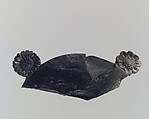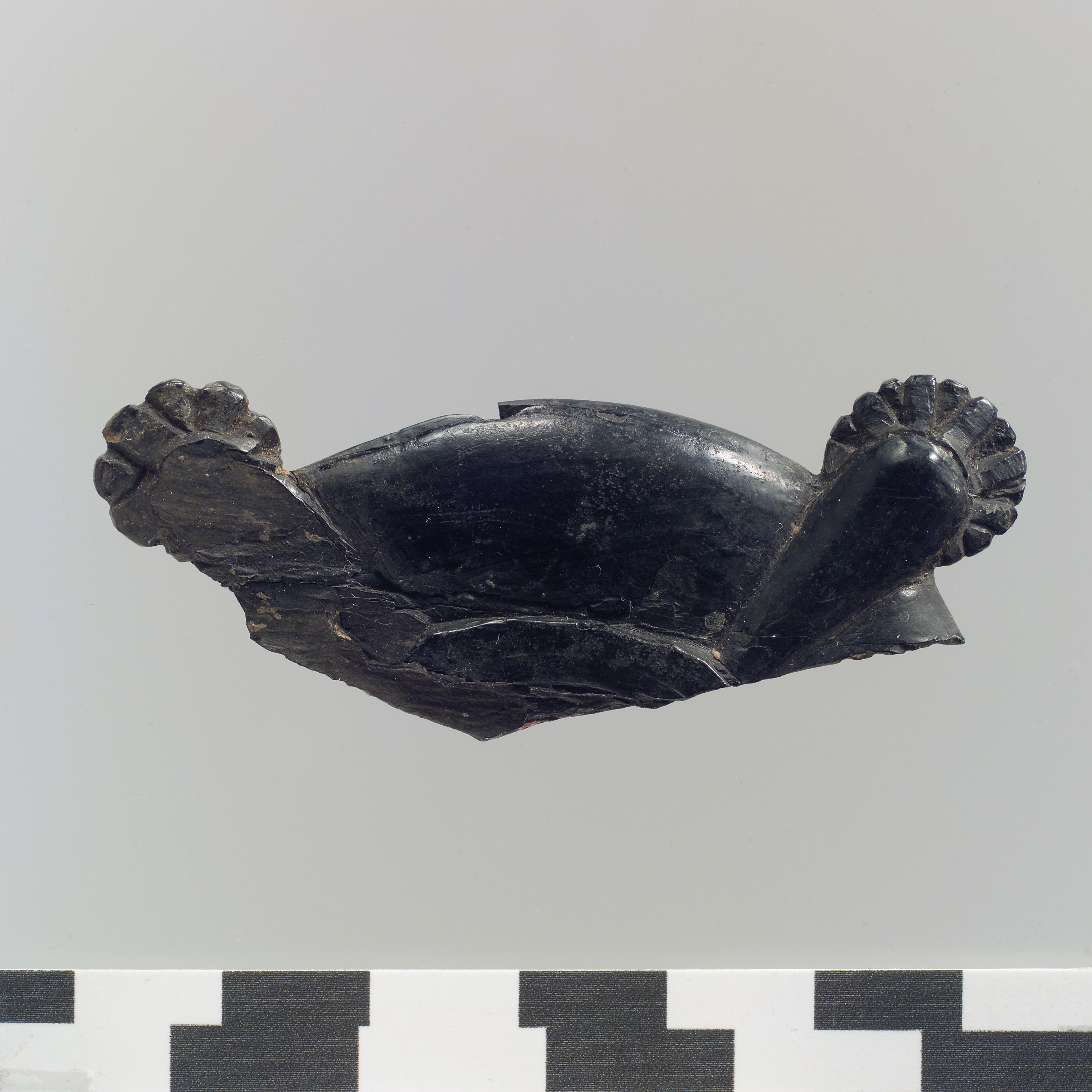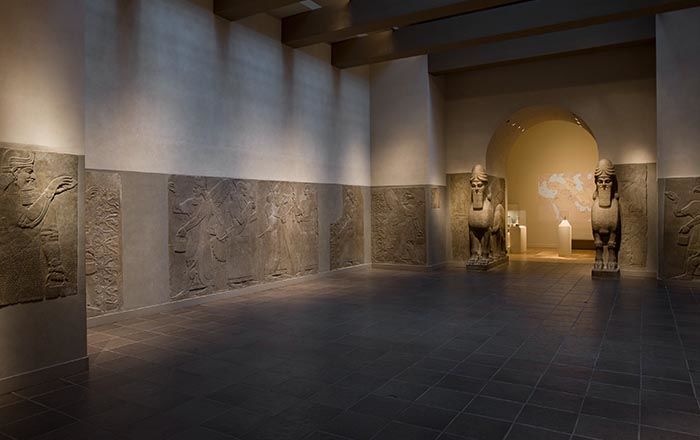Lid fragment
Not on view
This broken piece of carved ivory was probably a lid for a small round box, called a pyxis by scholars. The lid is smooth and flat on top with part of a circular depression visible at the center and two rosettes extending from the edges. The rosettes are shown with a hatched pattern in the center and differ from each other in their number of petals and the relative size of the petals. The underside of the lid is rounded and the rosettes are supported by rounded ridges carved into the surface. A fragmentary central ridge seems to have originally formed a ring on the underside of the lid. Boxes of this type could have held precious goods including luxurious commodities such as spices, incense, cosmetics, perfumes or ointments. The black and gray color of the lid suggests that is was damaged by fire during the sack of the Assyrian palace buildings at Nimrud at the time of Assyria’s final defeat in 614 and 612 B.C.
Built by the Assyrian king Ashurnasirpal II, the palaces and storerooms of Nimrud housed thousands of pieces of carved ivory. Most of the ivories served as furniture inlays or small precious objects such as boxes. While some of them were carved in the same style as the large Assyrian reliefs lining the walls of the Northwest Palace, the majority of the ivories display images and styles related to the arts of North Syria and the Phoenician city-states. Phoenician style ivories are distinguished by their use of imagery related to Egyptian art, such as sphinxes and figures wearing pharaonic crowns, and the use of elaborate carving techniques such as openwork and colored glass inlay. North Syrian style ivories tend to depict stockier figures in more dynamic compositions, carved as solid plaques with fewer added decorative elements. However, some pieces do not fit easily into any of these three styles. Most of the ivories were probably collected by the Assyrian kings as tribute from vassal states, and as booty from conquered enemies, while some may have been manufactured in workshops at Nimrud. The ivory tusks that provided the raw material for these objects were almost certainly from African elephants, imported from lands south of Egypt, although elephants did inhabit several river valleys in Syria until they were hunted to extinction by the end of the eighth century B.C.
This image cannot be enlarged, viewed at full screen, or downloaded.
This artwork is meant to be viewed from right to left. Scroll left to view more.



